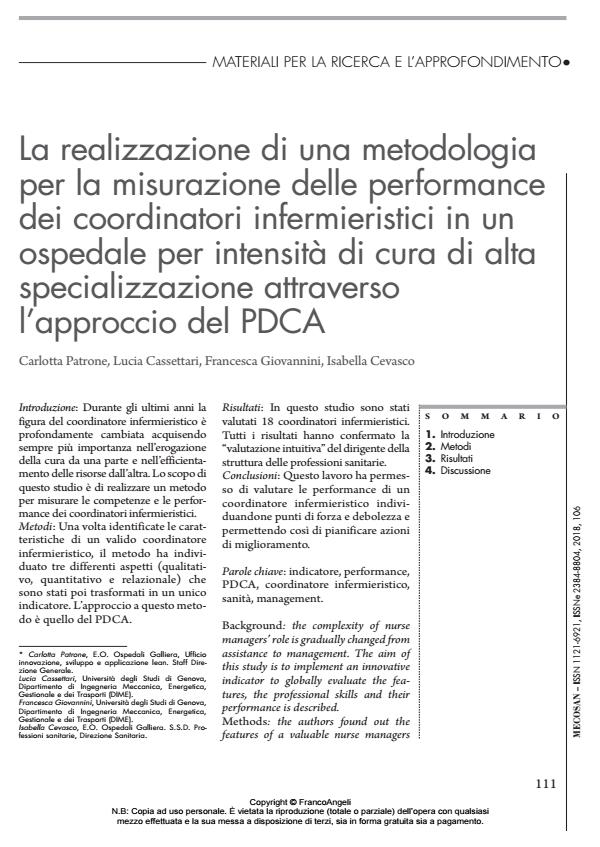La realizzazione di una metodologia per la misurazione delle performance dei coordinatori infermieristici in un ospedale per intensità di cura di alta specializzazione attraverso l’approccio del PDCA
Journal title MECOSAN
Author/s Carlotta Patrone, Lucia Cassettari, Francesca Giovannini, Isabella Cevasco
Publishing Year 2019 Issue 2018/106
Language Italian Pages 17 P. 111-127 File size 601 KB
DOI 10.3280/MESA2018-106006
DOI is like a bar code for intellectual property: to have more infomation
click here
Below, you can see the article first page
If you want to buy this article in PDF format, you can do it, following the instructions to buy download credits

FrancoAngeli is member of Publishers International Linking Association, Inc (PILA), a not-for-profit association which run the CrossRef service enabling links to and from online scholarly content.
Background: the complexity of nurse managers’ role is gradually changed from assistance to management. The aim of this study is to implement an innovative indicator to globally evaluate the features, the professional skills and their performance is described. Methods: the authors found out the features of a valuable nurse managers through an interview to the directors of all the nurses. The method individuated three different aspects (qualitative, quantitative and relational) that were transformed in a single indicator. The approach used by the authors is the PDCA. Results: A total of 18 nurse managers were evaluated in this study. All the results confirmed the judgment of the Healthcare Professions Structure head. Conclusion: This assessment method, validated with these tests, is able to evaluate the nurse manager’s ability to manage personnel, resources and patients.
Keywords: Indicator, PDCA, performance, nurse manager, healthcare, management.
- Indagine sul fenomeno del re-ricovero nel reparto Area a Conduzione Infermieristica (ACI) in un ospedale organizzato per intensità di cura Carlotta Patrone, Alessio Nicoli, Pasqualino Squillace, Matteo Puntoni, Isabella Cevasco, in MECOSAN 115/2021 pp.29
DOI: 10.3280/MESA2020-115003
Carlotta Patrone, Lucia Cassettari, Francesca Giovannini, Isabella Cevasco, La realizzazione di una metodologia per la misurazione delle performance dei coordinatori infermieristici in un ospedale per intensità di cura di alta specializzazione attraverso l’approccio del PDCA in "MECOSAN" 106/2018, pp 111-127, DOI: 10.3280/MESA2018-106006